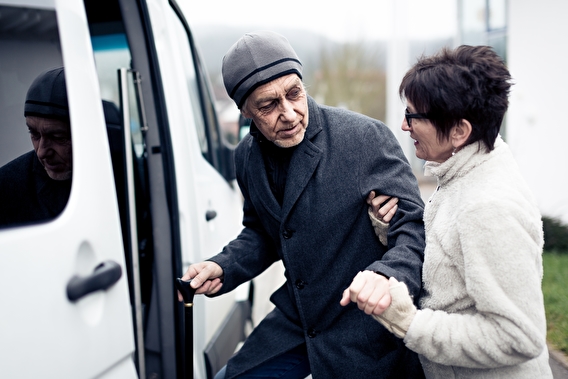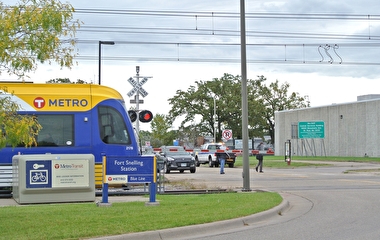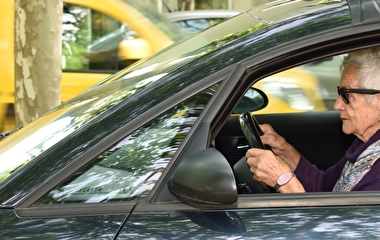
Establishing transit systems in rural communities is inherently challenging because of geographically spread-out populations. At the same time, rural communities often have an increased need for transit relative to their urban counterparts. Rural residents are frequently isolated from food, health care, and employment opportunities; for anyone who cannot own or drive a private vehicle (for reasons of age, disability, or income), this can be a significant problem.
CTS’s thematic focus for 2024—Rural Needs, Statewide Answers: Improving Transportation for All—puts focus on these issues. An April 30 CTS webinar featured two experts who are looking at outside-the-box technology and social media solutions to fill rural transit gaps.
Making use of informal transit systems
Tom Fisher, director of the Minnesota Design Center at the U of M, noted during his presentation that informal transportation systems—such as ride sharing organized over social media—have a lot of untapped potential in rural communities.
In Wabasha, Minnesota, Fisher and his fellow researchers found a number of Facebook groups that local rural residents use to organize car sharing. One, for example, coordinates carpools to Rochester for Mayo Clinic employees. Another organizes volunteer drivers who transport stray cats and dogs to vet clinics for spaying/neutering.
Volunteer drivers like these, Fisher said, could potentially fill transportation gaps where formalized systems fall short.
“There’s a lot of this happening kind of below the surface that isn’t necessarily visible,” said Fisher, who was the principal investigator for the LRRB-funded research project. “We think that this is where a lot of actual transportation innovation is going to happen in rural communities, maybe even before it happens in urban communities.”
As part of their project’s final report, Fisher and his team drafted recommendations for bolstering and incentivizing these informal networks:
- Take advantage of social media and build up local neighborhood networks. The app Nextdoor, for example, is a good resource for fostering neighbor-neighbor relationships, and local community Facebook pages—such as Wabasha helping Wabasha—are good places for keeping track of local needs and volunteer opportunities.
- Encourage and consider incentives for volunteers. Fisher suggests finding some way of offering payment to drivers for their time and gas, or possibly coordinating with local businesses to offer discounts to volunteer drivers.
- Set up a centralized hub to help organize efforts. City websites, for example, are a good place to coordinate online communication, and local nonprofits or libraries might be able to help with logistics and coordination.
“Rural transportation is really multi-faceted,” Fisher said. “This is far more prevalent than we even thought it would be.”
CTS covered this research in more detail in an August 2023 Catalyst article.
Designing a digital platform for ride coordination
The second webinar presenter, coordinator Elliott McFadden of MnDOT’s Greater Minnesota Shared Mobility Program, noted that having a streamlined means of accessing transit systems is critical for increasing ridership.
McFadden and his research team developed a pilot digital trip-planning platform, called MaaS (Mobility as a Service), in which riders in southern and western Minnesota can view and organize all their transportation options in one place. The platform includes different modes of transportation—private shuttles, taxis, ride-hail services, bike shares, and more—and allows users to do everything from route planning and tracking to ticket purchasing.
The team partnered with 13 agencies and providers in southern and western Minnesota—some public, some private—and used an emerging data standard that allowed them to add their transit route information to the Transit app. Riders can use Transit to access the ride information.
The data standard the researchers developed for this is unique, McFadden said, because it can accommodate both fixed-route trips (such as buses) and flexible routes (such as dial-a-ride or ADA paratransit). Adding the flexible routes was important for rural transit because rural communities have low population densities so are more likely to have non-fixed routes.
“We know right now that the transit industry has been pretty slow to develop solutions for rural transit systems,” McFadden said. “We have hundreds of agencies, thousands of transit services that are invisible to the public today. So that’s why we developed this data standard.”
The initial pilot wrapped up in April 2024; it was conducted by MnDOT after the agency received two grants from the Federal Transit Administration. McFadden and his team are planning to continue the research, and southern and western Minnesota data will continue to be available in the Transit app through June 2025. CTS covered this research in more detail in a May 2023 Catalyst article.
The webinar was hosted by CTS and held in conjunction with the CTS Transportation Planning and the Economy Council.
—Sophie Koch, contributing writer


